Here are the 25 most-downloaded ChemComm articles from the first quarter of 2016:
The surface chemistry of metal–organic frameworks
Christina V. McGuire and Ross S. Forgan
Chem. Commun., 2015, 51, 5199-5217, DOI: 10.1039/C4CC04458D, Feature Article
From themed collection 2015 Emerging Investigators
Radical C–H functionalization to construct heterocyclic compounds
Jin-Tao Yu and Changduo Pan
Chem. Commun., 2016, 52, 2220-2236, DOI: 10.1039/C5CC08872K, Feature Article
Fluorescent probes for the selective detection of chemical species inside mitochondria
Zheng Xu and Lin Xu
Chem. Commun., 2016, 52, 1094-1119, DOI: 10.1039/C5CC09248E, Feature Article
Rapid synthesis of zeolitic imidazolate framework-8 (ZIF-8) nanocrystals in an aqueous system
Yichang Pan, Yunyang Liu, Gaofeng Zeng, Lan Zhao and Zhiping Lai
Chem. Commun., 2011, 47, 2071-2073, DOI: 10.1039/C0CC05002D, Communication
Nanostructured electrochromic smart windows: traditional materials and NIR-selective plasmonic nanocrystals
Evan L. Runnerstrom, Anna Llordés, Sebastien D. Lounis and Delia J. Milliron
Chem. Commun., 2014, 50, 10555-10572, DOI: 10.1039/C4CC03109A, Feature Article
Reduction of graphene oxide via L-ascorbic acid
Jiali Zhang, Haijun Yang, Guangxia Shen, Ping Cheng, Jingyan Zhang and Shouwu Guo
Chem. Commun., 2010, 46, 1112-1114, DOI: 10.1039/B917705A, Communication
Graphene quantum dots: emergent nanolights for bioimaging, sensors, catalysis and photovoltaic devices
Jianhua Shen, Yihua Zhu, Xiaoling Yang and Chunzhong Li
Chem. Commun., 2012, 48, 3686-3699, DOI: 10.1039/C2CC00110A, Feature Article
Aggregation-induced emission: phenomenon, mechanism and applications
Yuning Hong, Jacky W. Y. Lam and Ben Zhong Tang
Chem. Commun., 2009, 4332-4353, DOI: 10.1039/B904665H, Feature Article
A facile synthesis of UiO-66, UiO-67 and their derivatives
Michael J. Katz, Zachary J. Brown, Yamil J. Colón, Paul W. Siu, Karl A. Scheidt, Randall Q. Snurr, Joseph T. Hupp and Omar K. Farha
Chem. Commun., 2013, 49, 9449-9451, DOI: 10.1039/C3CC46105J, Communication
Production of few-layer phosphorene by liquid exfoliation of black phosphorus
Jack R. Brent, Nicky Savjani, Edward A. Lewis, Sarah J. Haigh, David J. Lewis and Paul O’Brien
Chem. Commun., 2014, 50, 13338-13341, DOI: 10.1039/C4CC05752J, Communication
From themed collection Celebrating the 2016 RSC Prize and Award Winners
All-inorganic cesium lead halide perovskite nanocrystals for photodetector applications
Parthiban Ramasamy, Da-Hye Lim, Bumjin Kim, Seung-Ho Lee, Min-Sang Lee and Jong-Soo Lee
Chem. Commun., 2016, 52, 2067-2070, DOI: 10.1039/C5CC08643D, Communication
Photocatalytic and photoelectrocatalytic reduction of CO2 using heterogeneous catalysts with controlled nanostructures
Shunji Xie, Qinghong Zhang, Guodong Liu and Ye Wang
Chem. Commun., 2016, 52, 35-59, DOI: 10.1039/C5CC07613G, Feature Article
Preparation and applications of novel composites composed of metal–organic frameworks and two-dimensional materials
Shaozhou Li, Kai Yang, Chaoliang Tan, Xiao Huang, Wei Huang and Hua Zhang
Chem. Commun., 2016, 52, 1555-1562, DOI: 10.1039/C5CC09127F, Feature Article
Aerobic oxidation catalysis with stable radicals
Qun Cao, Laura M. Dornan, Luke Rogan, N. Louise Hughes and Mark J. Muldoon
Chem. Commun., 2014, 50, 4524-4543, DOI: 10.1039/C3CC47081D, Feature Article
Key processes in ruthenium-catalysed olefin metathesis
David J. Nelson, Simone Manzini, César A. Urbina-Blanco and Steven P. Nolan
Chem. Commun., 2014, 50, 10355-10375, DOI: 10.1039/C4CC02515F, Feature Article
Insight into the crystallization of amorphous imine-linked polymer networks to 2D covalent organic frameworks
Brian J. Smith, Anna C. Overholts, Nicky Hwang and William R. Dichtel
Chem. Commun., 2016, 52, 3690-3693, DOI: 10.1039/C5CC10221A, Communication
Creating a thermally activated delayed fluorescence channel in a single polymer system to enhance exciton utilization efficiency for bluish-green electroluminescence
Jiajia Luo, Guohua Xie, Shaolong Gong, Tianheng Chen and Chuluo Yang
Chem. Commun., 2016, 52, 2292-2295, DOI: 10.1039/C5CC09797E, Communication
Highly crystalline covalent organic frameworks from flexible building blocks
Liqian Xu, San-Yuan Ding, Junmin Liu, Junliang Sun, Wei Wang and Qi-Yu Zheng
Chem. Commun., 2016, 52, 4706-4709, DOI: 10.1039/C6CC01171C, Communication
Strongly green-photoluminescent graphene quantum dots for bioimaging applications
Shoujun Zhu, Junhu Zhang, Chunyan Qiao, Shijia Tang, Yunfeng Li, Wenjing Yuan, Bo Li, Lu Tian, Fang Liu, Rui Hu, Hainan Gao, Haotong Wei, Hao Zhang, Hongchen Sun and Bai Yang
Chem. Commun., 2011, 47, 6858-6860, DOI: 10.1039/C1CC11122A, Communication
Synthesis and catalytic properties of MIL-100(Fe), an iron(III) carboxylate with large pores
Patricia Horcajada, Suzy Surblé, Christian Serre, Do-Young Hong, You-Kyong Seo, Jong-San Chang, Jean-Marc Grenèche, Irene Margiolaki and Gérard Férey
Chem. Commun., 2007, 2820-2822, DOI: 10.1039/B704325B, Communication
Pharmaceutical cocrystals: along the path to improved medicines
Naga K. Duggirala, Miranda L. Perry, Örn Almarsson and Michael J. Zaworotko
Chem. Commun., 2016, 52, 640-655, DOI: 10.1039/C5CC08216A, Feature Article
Photo-click construction of a targetable and activatable two-photon probe imaging protease in apoptosis
Mi Zhou, Jing Hu, Mengmeng Zheng, Qinhua Song, Jinbo Li and Yan Zhang
Chem. Commun., 2016, 52, 2342-2345, DOI: 10.1039/C5CC09973K, Communication
Cobalt(III) catalyzed C-8 selective C–H and C–O coupling of quinoline N-oxide with internal alkynes via C–H activation and oxygen atom transfer
Nagaraju Barsu, Malay Sen, J. Richard Premkumar and Basker Sundararaju
Chem. Commun., 2016, 52, 1338-1341, DOI: 10.1039/C5CC08736H, Communication
Novel solvent properties of choline chloride/urea mixtures
Andrew P. Abbott, Glen Capper, David L. Davies, Raymond K. Rasheed and Vasuki Tambyrajah
Chem. Commun., 2003, 70-71, DOI: 10.1039/B210714G, Communication
Chemical synthesis of magnetic nanoparticles
Taeghwan Hyeon
Chem. Commun., 2003, 927-934, DOI: 10.1039/B207789B, Feature Article
ChemComm is the home of urgent high quality communications from across the chemical sciences. With a world renowned reputation for quality and fast times to publication (average of 40 days), ChemComm is the ideal place to publish your research.
Submit your urgent research to ChemComm today!
Stay up to date with ChemComm
Be among the first to hear about the newest articles being published – Sign-up to our journal news alert to receive information about most read articles, themed issues, journal news, as well as calls for papers and invitations.













 Scientists in the UK have developed
Scientists in the UK have developed 

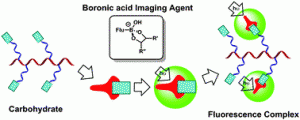

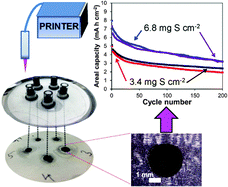
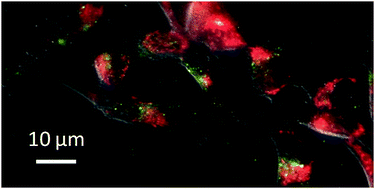
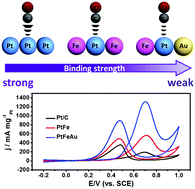
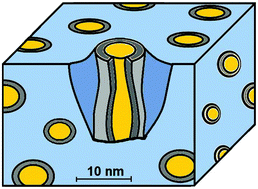
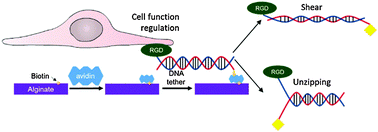
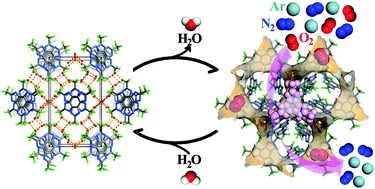

 European scientists have developed an
European scientists have developed an